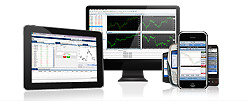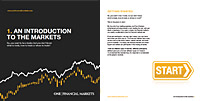

Asia FX rises, Japanese yen hits over 7-mth high on BOJ speculation
By Ambar Warrick
Investing.com -- Most Asian currencies advanced against the dollar on Monday, cheered largely by the prospect of smaller interest rate hikes by the Federal Reserve, while speculation over another hawkish move by the Bank of Japan pushed the yen to an over seven-month peak.
The yen rose 0.4% to 127.32 against the dollar, reaching its highest level since late-May ahead of a BOJ policy meeting later this week. The currency has been on a tear since the central bank unexpectedly struck a hawkish tone during its December meeting by widening the band within which it allows the yields on its benchmark government bonds to trade.
Yields on Japanese 10-year bonds rose above the 0.5% upper end set by the BOJ for a second consecutive day.
Markets are now positioning for similar moves from the BOJ this week, given that inflation in the country is trending at 40-year highs. Producer price index inflation data on Monday showed that factory gate prices grew more than expected in December, while November’s reading was also revised higher.
Still, the BOJ is expected to keep interest rates unchanged at ultra-low levels.
Strength in the yen weighed heavily on the dollar index and dollar index futures, which fell about 0.3% each to a new seven-month low. The greenback was battered in recent weeks by signs of easing U.S. inflation, which is broadly expected to push the Fed into slowing its pace of interest rate hikes.
Asian currencies rallied on the prospect of such a scenario, given that it heralds easing pressure from high U.S. yields after a sharp increase in interest rates through 2022.
Risk-heavy units in Southeast Asia were the best performers for the day, with the Indonesian rupiah and the Philippine peso adding 0.8% and 0.6%, respectively.
The Australian dollar rose 0.5% and cleared the 0.7 level against the dollar for the first time in five months, as high inflation in the country also spurred bets that the Reserve Bank will continue to hike interest rates this year.
The Chinese yuan rose 0.1% as the People’s Bank of China kept its medium-term lending rate unchanged. But the central bank also injected more liquidity into markets to shore up economic growth, as the country grapples with its worst yet COVID-19 outbreak.
Still, markets are positioning for an eventual economic recovery in the country after it began relaxing most anti-COVID restrictions in December.
Begin trading today! Create an account by completing our form
Privacy Notice
At One Financial Markets we are committed to safeguarding your privacy.
Please see our Privacy Policy for details about what information is collected from you and why it is collected. We do not sell your information or use it other than as described in the Policy.
Please note that it is in our legitimate business interest to send you certain marketing emails from time to time. However, if you would prefer not to receive these you can opt-out by ticking the box below.
Alternatively, you can use the unsubscribe link at the bottom of the Demo account confirmation email or any subsequent emails we send.
By completing the form and downloading the platform you agree with the use of your personal information as detailed in the Policy.






